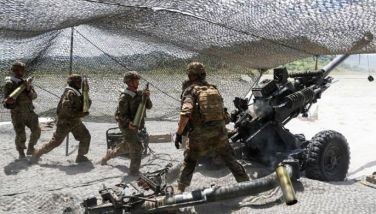This truck can run 60 kms to a liter
August 7, 2004 | 12:00am
 A Filipino inventor has come up with an automotive contraption that can more than double a pickup truck’s mileage for every liter of gasoline.
A Filipino inventor has come up with an automotive contraption that can more than double a pickup truck’s mileage for every liter of gasoline.
Aquilino Vinuya, a native of Pampanga who now resides in Tagum City in Davao del Norte, has named his contraption the hydrofuel merger device (HMD).
The HMD can enable a vehicle to travel 30 to 60 kilometers for every liter of gasoline. Most cars travel 10 km per liter of gas.
Over the past seven years, Vinuya, a retired United States army captain who once worked as an electronics technician at the former Clark Air base in Angeles City, has been using a prototype pickup truck fitted with HMD.
Evaluated by regional representatives of the Department of Trade and Industry (DTI) on Sept. 9, 2003, the pickup covered 30 kms using one liter of fuel.
In another test run, an HMD-suited car ran from Tagum City to Davao City and back — a stretch of 112 kms — on only two liters of gasoline, reported Dr. Eduardo Araral, retired president of the University of Southeastern Philippines (USP) in Davao City. The US-trained Araral is now Vinuya’s partner for marketing.
The technology has also been tested by the Technical Education and Skills Development Authority (TESDA) and the USP College of Engineering.
"All agreed on its technical, environmental and economic viability," Araral said.
Last June 11, engineers from the Department of Science and Technology (DOST) also evaluated Vinuya’s prototype pickup truck.
With HMD, they noted, the vehicle covered 32.28 kms per liter of gas at 40 kms per hour. Without HMD, only 11.94 kms were covered at the same speed.
Recently, too, an engineer of the Philippine National Oil Co. (PNOC) tried Vinuya’s pickup and commented: "It’s too good to be true."
Araral said, "This fuel merger technology has undergone painstaking research and development – enough time for us to claim that it is now a mature technology ready for commercialization."
Following application for patent, the invention was assigned an Intellectual Property Office (IPO) application number on July 8, 2003.
Since the application has exceeded a year, Araral said "if the Philippines adopts the American policy he should already be granted a provisional patent in order to allow his invention to help our economy."
In a letter dated May 20, 2004, Araral presented the technology to President Arroyo as "an emergency and permanent solution to the pesky fuel crisis which threatens our country’s social, political and economic stability."
The fuel merger, he stressed, is almost pollution-free (with carbon monoxide emission only 1.77 percent against the allowable 4.5 percent and hydrocarbon at only 4.5 parts per million versus the allowable emission of 800 ppm), with maintenance cost reduced by half and a lifetime guarantee.
While ordinary pickups can travel only 8-12 kms per liter, the prototype pickup with HMD could cover 16-24 kms.
"Actually, in several tests, we have achieved 32 to 58 kms per liter, depending on the velocity," Araral said.
The inventor’s group has proposed the following measures to the government to facilitate the commercial use of the cost-saving device:
• That the IPO director-general, who is directly under the Office of the President, can facilitate approval of the patent for exigency.
• The government buys the invention after proper verification of its technical, economic and environmental viability at a price set by the inventor’s group.
• That upon signing of the contract, which includes a guarantee of the invention’s viability and a down payment of half the set price, the technology will be transferred to the government.
• If the government moves with dispatch, thousands of units of HMD can be fabricated and sold simultaneously or on a loan at P15,000 per unit and fitted into vehicles in accredited centers.
• Payment of the balance can be made upon verified successful commissioning of five vehicles.
• After the emergency transport situation has been eased, the government may sell the patent at same or higher cost to vehicle manufacturers who are investing in the country.
• An alternative is for in-country carmakers to buy the technology with government incentives and mass produce the device for old cars/trucks and later incorporate the design into new vehicles.
Dr. Araral concluded: "Madame President, here is a chance for your government to provide an alternative solution to the increasing problem in rising fuel costs, allowing you to create a legacy of national scope and significance to and for our beloved country."
BrandSpace Articles
<
>
- Latest
Latest
Latest
February 1, 2025 - 5:46pm
By Joanna Perfecto | February 1, 2025 - 5:46pm
January 25, 2025 - 11:30am
By Katrina Guerrero | January 25, 2025 - 11:30am
January 18, 2025 - 1:35pm
By Rupert Paul Manhit | January 18, 2025 - 1:35pm
January 11, 2025 - 5:59pm
By Joyce Ilas-Reyes | January 11, 2025 - 5:59pm
Recommended
February 15, 2025 - 12:00am
























